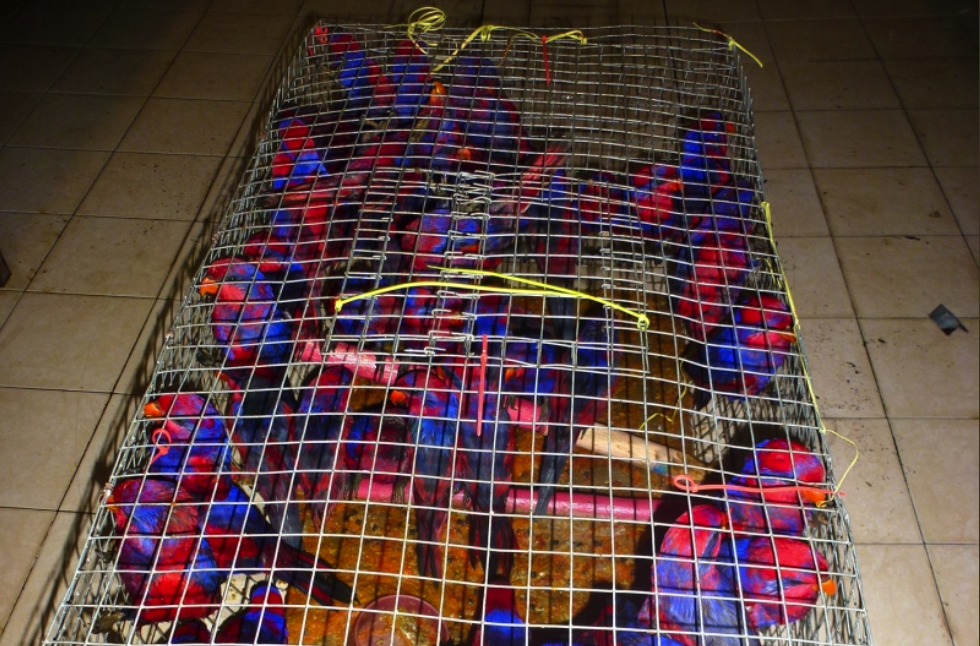Red-and-blue Lories: Rescue from Trade
Addressing ongoing seizures is essential in conserving Red-and-blue Lories (Eos histrio), given their Endangered status and continued capture for trade. A concerted approach uniting NGOs, law enforcement agencies and forestry departments is needed.
WPT’s key collaborators in the effort will be the North Sulawesi Provincial Department for Conservation of Natural Resources (BKSDA), Marine Police, Local Police, Tasikoki Wildlife Rescue Centre (Tasikoki WRC) and Pusat Informasi Sampiri (PIS). A multi-faceted strategy aims to stop the initial movement of birds off the islands and secondarily curb onward travel for birds intercepted at the port in Manado, a main shipping hub. Confiscated birds, usually smuggled in plastic bottles, need immediate veterinary attention and will be triaged at holding aviaries. This approach streamlines their release, eliminating the need for prolonged quarantine at Tasikoki WRC and expediting their return to the wild. To track potential recurrence of trapping, birds intercepted from trade will be ringed for identification. In the second phase of this project, WPT’s team plans to include international ports in the Philippines, which will address the global trade of this species.
A total of 258 Red-and-blue Lories have been recently confiscated and received by official facilities In North Sulawesi. This includes recent spikes of 93 birds in 2023 and continued seizures in 2024. WPT and collaborators Tasikoki WRC and Pusat Informasi Sampiri are continuing to actively combat the issues affecting these parrots.
IUCN/CITES Status: Endangered / Appendix I
Population: 5500–14,000 mature individuals; nominate of species possibly extinct on Sangihe Is. Decreasing.
Threats: This species has a restricted range. Habitat loss and overexploitation for trade have caused serious declines. Other potential threats include use of pesticides and disease transmission from captive to wild birds.
Range: Native to Sangihe, Talaud and Nanusa Islands, Indonesia. Nominate on Sangihe likely extinct.
Natural history: Red-and-blue Lories are found in forest and cultivated areas up to 1250 m (4100 ft). Their diet includes coconut, and the fruit and nectar of various trees. Insects are also taken. They are most commonly seen flying in groups of up to 8 birds. Large, very vocal numbers gather together to roost.

